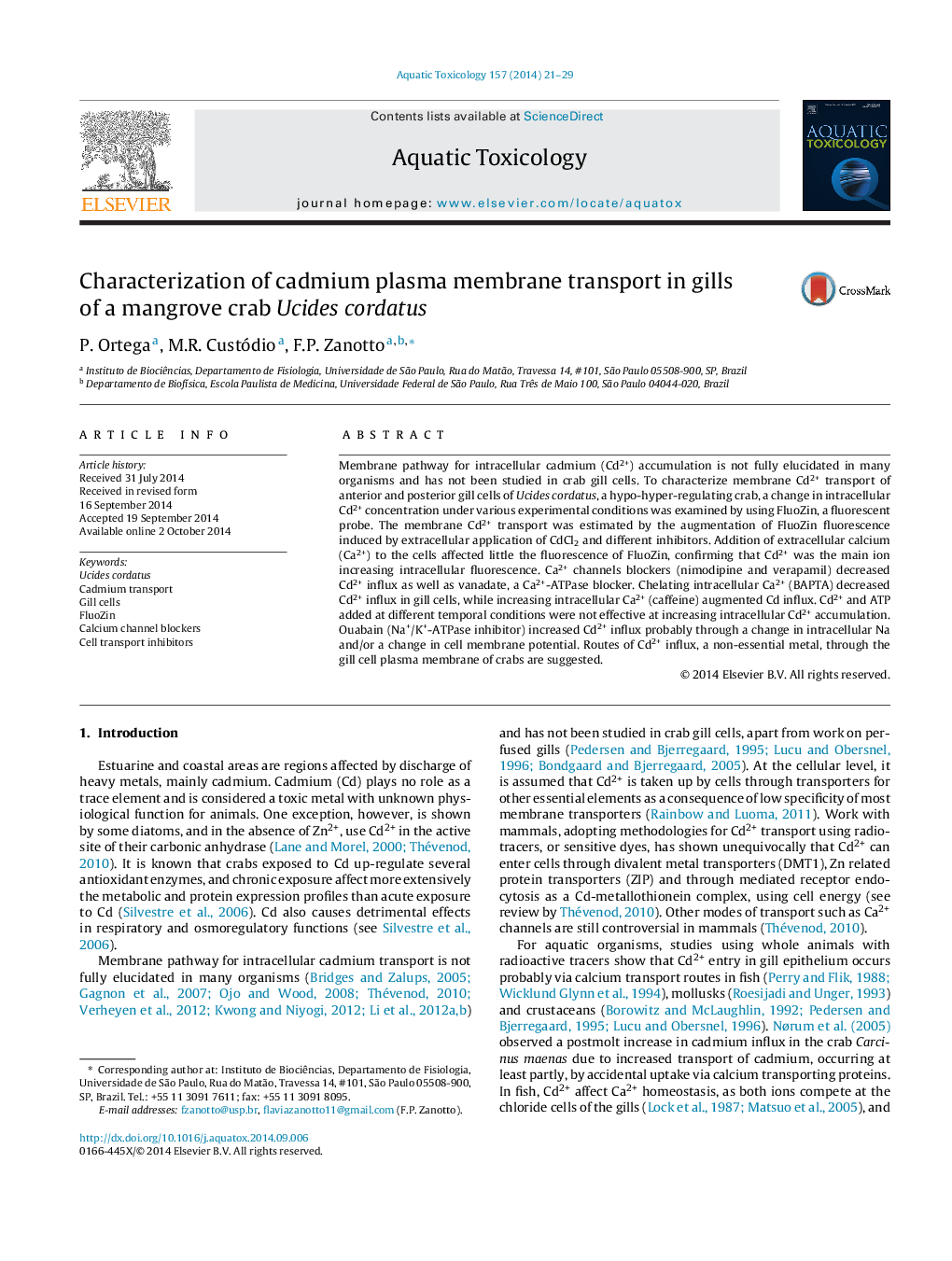| Article ID | Journal | Published Year | Pages | File Type |
|---|---|---|---|---|
| 4529290 | Aquatic Toxicology | 2014 | 9 Pages |
•Cd2+ gill cell transport, a non-essential toxic metal, was characterized in a hypo-hyper-regulating mangrove crab Ucides cordatus.•Cd2+ enter gill cells through Ca2+ channels and is dependent of intracellular Ca2+ levels.•Route of entry in gill cells also involves a Cd2+/Ca2+ (2Na) exchanger.•Cd transport depends on Na+/K+-ATPase and gill cell electrochemical gradient.•Vanadate inhibits gill Cd2+ transport and ouabain increase gill Cd2+ transport.
Membrane pathway for intracellular cadmium (Cd2+) accumulation is not fully elucidated in many organisms and has not been studied in crab gill cells. To characterize membrane Cd2+ transport of anterior and posterior gill cells of Ucides cordatus, a hypo-hyper-regulating crab, a change in intracellular Cd2+ concentration under various experimental conditions was examined by using FluoZin, a fluorescent probe. The membrane Cd2+ transport was estimated by the augmentation of FluoZin fluorescence induced by extracellular application of CdCl2 and different inhibitors. Addition of extracellular calcium (Ca2+) to the cells affected little the fluorescence of FluoZin, confirming that Cd2+ was the main ion increasing intracellular fluorescence. Ca2+ channels blockers (nimodipine and verapamil) decreased Cd2+ influx as well as vanadate, a Ca2+-ATPase blocker. Chelating intracellular Ca2+ (BAPTA) decreased Cd2+ influx in gill cells, while increasing intracellular Ca2+ (caffeine) augmented Cd influx. Cd2+ and ATP added at different temporal conditions were not effective at increasing intracellular Cd2+ accumulation. Ouabain (Na+/K+-ATPase inhibitor) increased Cd2+ influx probably through a change in intracellular Na and/or a change in cell membrane potential. Routes of Cd2+ influx, a non-essential metal, through the gill cell plasma membrane of crabs are suggested.
